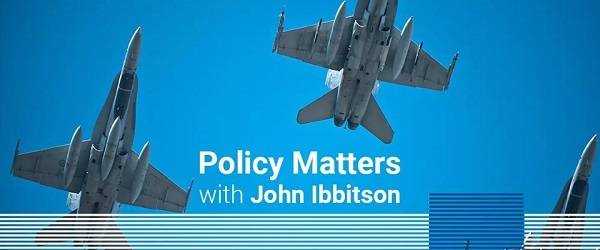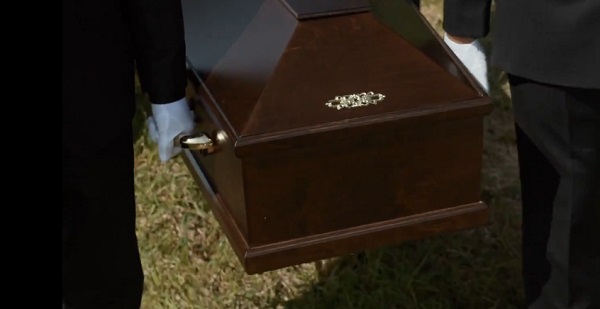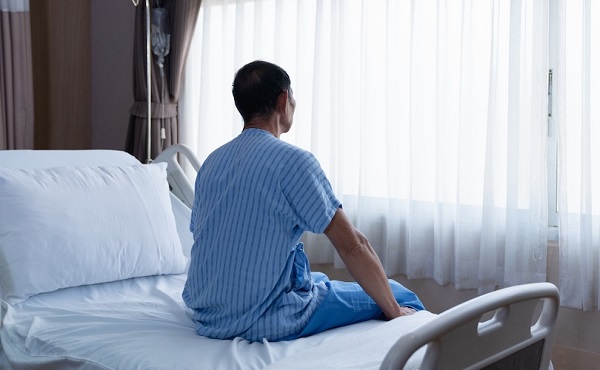armed forces
Canada could cut deal with U.S.—increase defence spending, remove tariffs

From the Fraser Institute
Because we live in dangerous times, and because an honest country keeps its word, Canada should meet its NATO commitment to spend at least 2 per cent of GDP on defence. But there’s another reason to live up to that promise—it’s good for trade.
Countries that are able to defend themselves earn the respect of their allies. That respect can provide tangible benefits. Consider Cyprus and the Auto Pact.
In the winter of 1964, in the depths of the Cold War, violence between Greek and Turkish Cypriots threatened to escalate into war between Turkey and Greece. President Lyndon Johnson, anxious to prevent war between two NATO members, was hugely grateful when Prime Minister Lester Pearson agreed to dispatch a peacekeeping force to the island.
“You’ll never know what this may have prevented,” said Johnson. “Now what can I do for you?” As Pearson noted in his memoirs, “I had some credit in the bank.”
A year later, Canada and the United States signed the Auto Pact, which guaranteed minimum levels of production for the Canadian auto industry. “I believe that Johnson’s willingness to agree to the Auto Pact the next year, an agreement that hugely benefited Canada’s auto sector, may well have been Pearson’s reward for Cyprus,” wrote historian J.L. Granatstein years later.
Canada’s relations with its NATO allies cooled in the years when Pierre Trudeau was prime minister. Trudeau considered pulling out of NATO entirely, but in the end contented himself with greatly reducing Canada’s troop presence in Europe. But Trudeau began to show new respect for NATO when he sought to diversify Canada’s trading relationships. “No tanks, no trade,” West German Chancellor Helmut Schmidt reportedly told him. Trudeau subsequently boosted defence spending and Canada acquired German Leopard tanks.
In the 1980s, as Brian Mulroney sought to improve relations with the U.S., his government maintained defence spending at or near 2 per cent of GDP, even as the government reduced spending in other areas to bring down a chronic deficit. On Mulroney’s watch, Canada retained a robust commitment to NATO and NORAD. In February 1990, former Cold War antagonists agreed to a process for German reunification during the Open Skies conference in Ottawa; six months later, Canada joined a U.S.-led coalition that ejected Iraqi forces from Kuwait.
And in the midst of this stalwart support, Canada and the U.S. negotiated their historic free trade agreement.
Then came the so-called Decade of Darkness, as Jean Chretien’s government cut funding to the military to help balance the budget. In the 2000s, Stephen Harper ensured that the Canadian mission in Afghanistan was properly equipped, but his government further cut spending in the wake of the 2008-09 financial crisis. By the time Justin Trudeau came to power, defence spending was at 1 per cent of GDP.
While it appears Justin Trudeau’s government increased defence spending, part of that is the accounting trick of putting veterans’ benefits in the budget. In fact, Canada remains virtually the sole outlier among NATO members in having no credible plan to get to 2 per cent any time soon.
Last spring, 23 U.S. senators (both Democrat and Republican) issued a letter taking Canada to task for failing to meet its defence commitments. And they spoke plainly. “We are concerned and profoundly disappointed that Canada’s most recent projection indicated that it will not reach its two percent commitment this decade.”
In that sense, Donald Trump was speaking for everyone in Washington when, as president-elect, he told reporters that “we basically protect Canada… we’re spending hundreds of billions a year to take care of Canada.”
That doesn’t in any way excuse the punitive tariffs the administration imposed on Canada and Mexico over the weekend. Those economic sanctions are capricious, vindictive and mutually damaging. Canada had no choice to but to respond in kind.
But it’s also true that other countries no longer take this country seriously. During the Biden administration, the U.S., the United Kingdom and Australia entered into the AUKUS security pact. Canada wasn’t invited. And QUAD security dialogue involving Australia, India, Japan and the U.S. is not QUINT, because we weren’t asked to join.
Canada will have a new federal government within months. Its highest priority must be to restore free trade with the U.S. One way to negotiate seriously with the Trump administration may be to offer a specific concrete program of investment in the NORAD partnership, in exchange for the removal of tariffs.
If the Americans agree, it wouldn’t be the first time that trade and defence were intertwined.
armed forces
Canadian veteran says she knows at least 20 service members who were offered euthanasia

From LifeSiteNews
Canadian Armed Forces veteran Kelsi Sheren told members of the House of Commons that he has proof of veterans being offered assisted suicide.
Canada’s liberal euthanasia laws have made the practice so commonplace that a Canadian Armed Forces (CAF) veteran has said she knows and has “proof” that no less than 20 of her colleagues were offered unsolicited state-sponsored euthanasia.
Kelsi Sheren, who is a CAF veteran, recently told MPs in the House of Commons veterans affairs committee that “over 20 veterans have confirmed being offered MAID.”
“I have the proof, and I have proof of more,” Sheren told the committee during an October 28 meeting.
Conservative MP Blake Richards asked Sheren if she was willing to provide them with evidence to affirm her allegations.
Sheren noted how the 20 veterans have given written testimonies, or actual audio recordings, of when they were offered what in Canada is known as Medical Assistance in Dying (MAiD).
“We also have other individuals who are too afraid to come forward because Veterans Affairs has threatened their benefits,” she told MPs, adding that some other veterans were even offered non-disclosure agreements along with “payouts if they were to take it.”
Veterans Affairs Canada (VAC) has told the media its “employees have no role or mandate to recommend or raise (MAid). ”
As reported by LifeSiteNews, this is not the first time reports of CAF veterans saying they were offered MAiD.
Indeed, as reported by LifeSiteNews, it was revealed last year that the federal department in charge of helping Canadian veterans appears to have purposefully prevented the existence of a paper after scandalous reports surfaced alleging that caseworkers had recommended euthanasia to suffering service members.
LifeSiteNews recently published a report noting how a Canadian combat veteran and artillery gunner revealed, while speaking on a podcast with Dr. Jordan Peterson, that the drugs used in MAiD essentially waterboard a person to death. Assisted suicide was legalized by the Liberal government of former Prime Minister Justin Trudeau in 2016.
A new EPC report has revealed that Canada has euthanized 90,000 people since 2016.
As reported by LifeSiteNews last week, a Conservative MP’s private member’s bill that, if passed, would ban euthanasia for people with mental illness received the full support of the Euthanasia Prevention Coalition (EPC).
armed forces
Why we keep getting Remembrance Day wrong

This article supplied by Troy Media.
 By Pat Murphy
By Pat Murphy
Remembrance Day once honoured soldiers for their courage and conviction, but the values they fought for have long since been rejected
With the untimely death of Tim Cook on Oct. 25, Canada lost a valued historian. Military history was Cook’s oeuvre, and the First World War was a particular specialty. His ability to marry academic rigour with accessible storytelling made him a relatively rare bird.
Naturally, Cook wrote about battles, military commanders and political leaders. But he was also fascinated with ordinary soldiers, scouring the archives for personal letters from the front and other material to develop an understanding of what
motivated the soldiers and how they managed the day-to-day horrors of prolonged trench warfare in an environment characterized by cold, mud, lice and rats, not to mention the ever-present spectre of violent death.
Camaraderie was critical. To quote from an interview with Cook: “one of the ways they cope is to create their own tribe, their own group that is insulated from everyone else.”
All of which brings us to Remembrance Day.
Although formally recognized as “remembrance for the men and women who have served, and continue to serve our country during times of war, conflict and peace,” both the origins and iconography of Remembrance Day relate to the First World War. There’s the two-minute silence at the 11th hour of the 11th day of the 11th month to observe the formal end of hostilities in 1918; the playing of the Last Post; and, of course, the ubiquitous red poppies.
The conflict wasn’t post Confederation Canada’s first military endeavour, but its scale dwarfed anything that came before it, and only the subsequent Second World War was a comparable event. Some 620,000 Canadians served between 1914 and 1918 and approximately 60,000 were killed. To get a sense of scale, adjust the fatalities for population growth and it would be comfortably north of 300,000 today.
In War: How Conflict Shaped Us, Margaret MacMillan notes the long history of cultures elevating personal characteristics associated with battlefield success, honouring bravery, endurance, toughness and the willingness to face death. It’s been pretty much a universal characteristic.
Nor should we think of war as only a male activity driven by patriarchal social structures. While it’s true that military hierarchies are traditionally male and the fighting in most wars has been done largely by men, women have always played
a key role in reinforcing the culture.
We, though, have become somewhat uncomfortable with the warrior ethos. Take, for instance, In Flanders Fields. Written in 1915 by Guelph’s John McCrae, the poem has acquired iconic status over the decades. It’s haunting and melancholy, sufficiently so to grab at your throat and send shivers down your spine. It’s also become inextricably intertwined with Remembrance Day.
There is, however, a small problem. While we now view the First World War as senseless carnage, In Flanders Fields has a very different perspective. As the third and final stanza makes unequivocally clear, the poem’s message isn’t about the war’s futility—it’s about the need to keep the faith and carry on to victory.
Much the same can be said about the music associated with the era. Those songs written in recent decades stress the sadness and futility of it all, but the actual popular music of the time was cheerful, patriotic and resolute.
Rather than seeing the soldiers as they were, we insist on recasting them as victims. Stripping them of personal agency, we ignore the fact that 80 per cent of them were volunteers, people who, for various reasons, chose to go to war.
So what motivated them?
Many were surely lured by the male affinity for adventure, compounded by patriotic fervour and enthusiastic loyalty to the concept of king and empire, however incomprehensible or disreputable the latter may now seem to us. There was also the buzz of an environment where the usual social norms regarding life, death and destruction had either vanished or become significantly attenuated. In her book, MacMillan documents how some found the whole experience “vastly exciting.”
Acknowledging this shouldn’t be confused with cheerleading. As I’ve previously written on more than one occasion, I think Britain’s reluctant decision to enter the First World War was a tragic error on many fronts. And if Britain had stood aside, Canada wouldn’t have been involved.
But respectfully remembering those who died shouldn’t be confused with turning them into something they were not. They weren’t hapless victims—they were people with beliefs and values of their own, even if we no longer look at the world in the same way they did.
Troy Media columnist Pat Murphy casts a history buff’s eye at the goings-on in our world. Never cynical – well, perhaps a little bit.
Troy Media empowers Canadian community news outlets by providing independent, insightful analysis and commentary. Our mission is to support local media in helping Canadians stay informed and engaged by delivering reliable content that strengthens community connections and deepens understanding across the country.
-

 Daily Caller2 days ago
Daily Caller2 days ago‘Holy Sh*t!’: Podcaster Aghast As Charlie Kirk’s Security Leader Reads Texts He Allegedly Sent University Police
-

 Crime9 hours ago
Crime9 hours ago‘Modern-Day Escobar’: U.S. Says Former Canadian Olympian Ran Cocaine Pipeline with Cartel Protection and a Corrupt Toronto Lawyer
-

 Great Reset2 days ago
Great Reset2 days agoCanadian government forcing doctors to promote euthanasia to patients: report
-

 Alberta2 days ago
Alberta2 days agoSylvan Lake football coach fired for opposing transgender ideology elected to town council
-

 Carbon Tax2 days ago
Carbon Tax2 days agoCarney fails to undo Trudeau’s devastating energy policies
-

 Business1 day ago
Business1 day agoNearly One-Quarter of Consumer-Goods Firms Preparing to Exit Canada, Industry CEO Warns Parliament
-

 Health2 days ago
Health2 days agoNEW STUDY: Infant Vaccine “Intensity” Strongly Predicts Autism Rates Worldwide
-

 Addictions2 days ago
Addictions2 days agoActivists Claim Dealers Can Fix Canada’s Drug Problem




